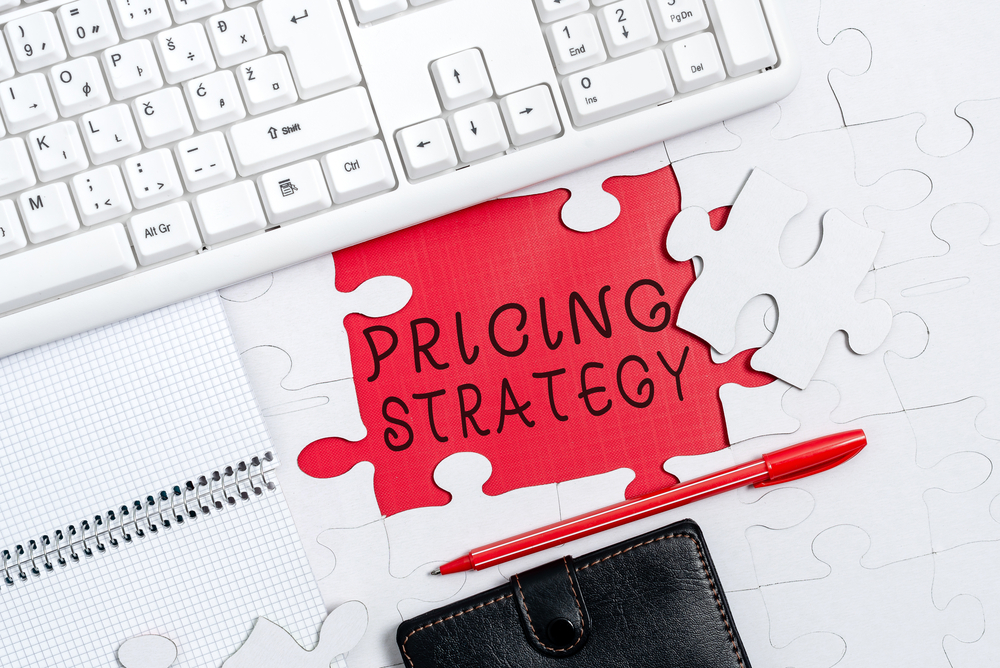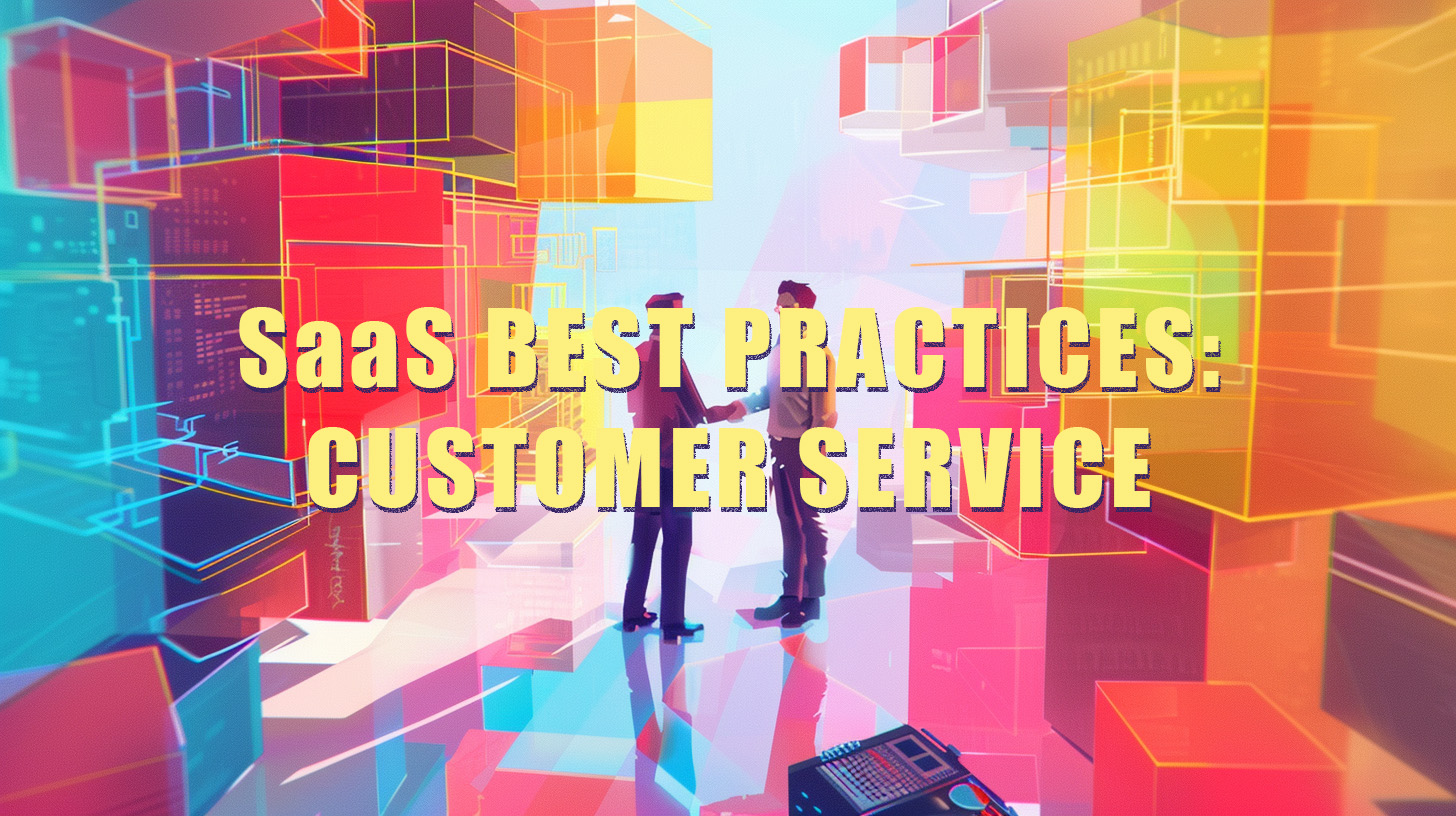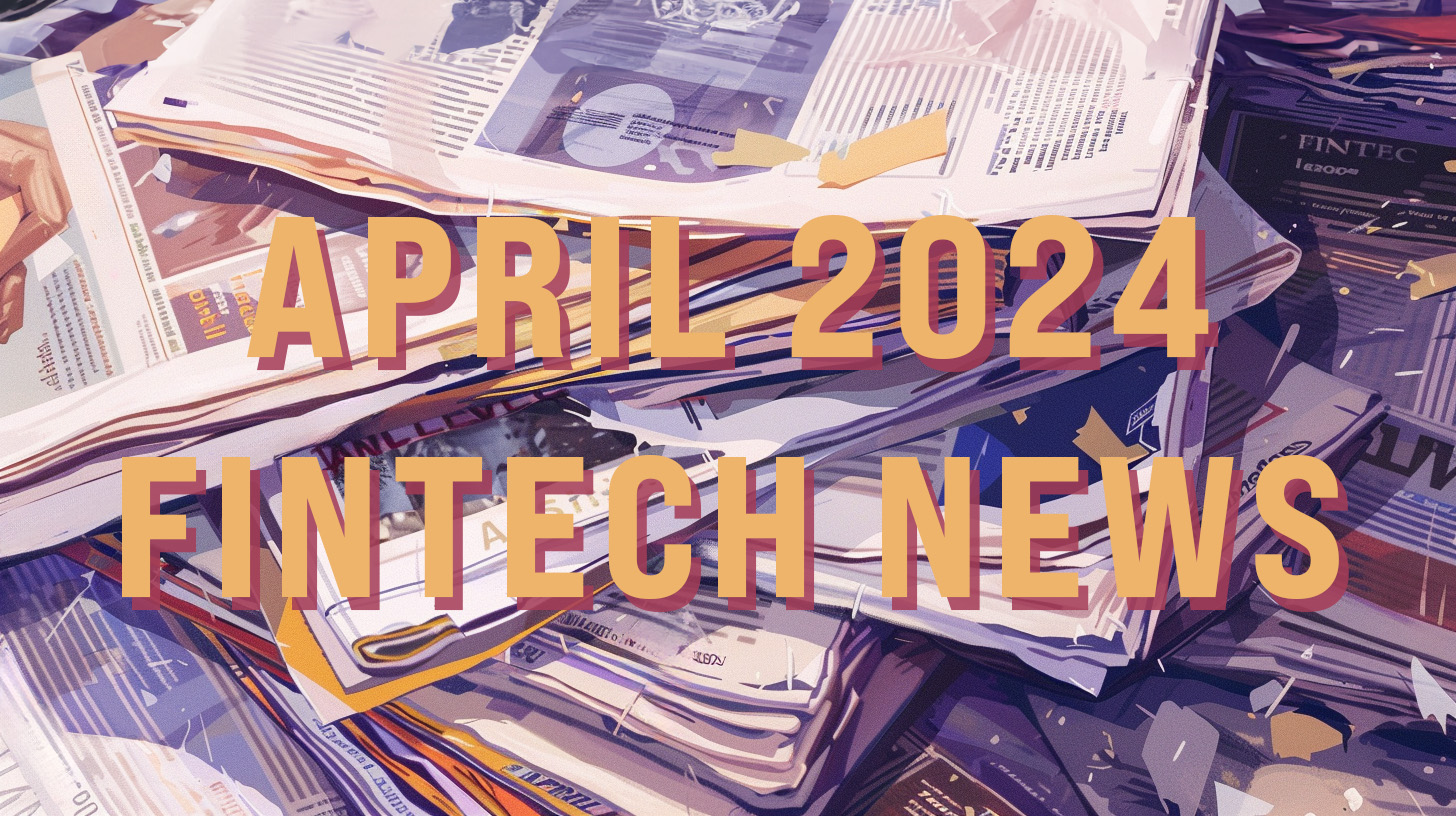
From Freemium to Premium: Exploring the Landscape of SaaS Pricing
May 3, 2023 3 minutes
As innovative leaders in the Software as a Service (SaaS) arena, you know firsthand how this business model is reshaping the way we use software – making it more accessible, flexible, and budget-friendly than ever before. But with great innovation comes great hurdles, and one of the biggest challenges you face is setting the right price for your product.
The art of pricing in the SaaS world isn’t merely about slapping a price tag on your service. It’s a strategic game-changer that can be the difference between your product being the talk of the industry or just gathering virtual dust. Set the price too high, and you might scare away potential customers. Go too low, and you risk selling your top-notch product short, impacting your profitability. So, getting your SaaS pricing model right is like striking gold in the business world.
Ready to dive into this fascinating topic? This blog is your treasure map, guiding you through the intricate landscape of SaaS pricing models. We’ll explore different models from every angle, including per user, per active user, tiered, flat-rate, usage-based, per-feature, and freemium pricing models. You’ll discover the importance of ‘functionality’ in pricing, learn how to reduce churn with effective pricing strategies, and get a behind-the-scenes look at how successful SaaS companies are acing their pricing game.
Armed with this knowledge, you’ll be ready to set a pricing strategy that not only attracts and keeps customers but also fuels your business growth engine. So buckle up, SaaS trailblazers, and let’s embark on an exciting journey into SaaS pricing models.
Understanding the Basics of SaaS Pricing
Let’s begin our journey by covering some basics. In the world of SaaS, pricing is not a one-size-fits-all game. It’s a multifaceted strategy that can have a significant impact on your business’s performance. Here are a few key concepts to understand:
Functionality in SaaS
Functionality refers to the capabilities and features that your software provides to users. It’s the value that you deliver to your customers, helping them solve problems or make their jobs easier. Some SaaS products have a wide range of features, while others focus on doing one thing exceptionally well.
The breadth and depth of your functionality play a critical role in determining your pricing. More robust or complex features may command higher prices, while simpler functionality might be priced lower. It depends on the customer needs you wish to target and the lifetime value (LTV) your product can provide.
Per User or Per Active User Pricing
In SaaS, you often charge based on the number of users who will be accessing the software. This could be ‘per user’ pricing, where you charge for every user, regardless of how much they use the software.
Alternatively, ‘per active user’ pricing only charges for users who actively use the software during a given period. Both of these models have their benefits and challenges, which we’ll discuss in more detail later on, and both have an impact on customer retention.
Churn and SaaS Pricing Strategy
Churn refers to the rate at which customers stop subscribing to your software. A well-thought-out pricing strategy can help reduce churn by ensuring customers feel they’re getting good value for their money. This might involve offering different pricing tiers to cater to different user needs, or implementing usage-based pricing so customers only pay for what they use.
Understanding these basic concepts is the first step towards developing a successful SaaS pricing strategy. Remember, the goal isn’t just to set a price, but to create a pricing model that aligns with your customers’ perceived value of your product, encourages long-term usage, and ultimately drives your business’s growth.
Is your pricing model creating chargebacks?
Detailed Overview of Popular SaaS Pricing Models
Now that we’ve covered the basics, let’s delve into the heart of SaaS pricing strategies: the pricing models. Each model has its unique characteristics, advantages, and drawbacks.
User-Based Pricing Model
The per user pricing model, also known as the per-seat pricing model, is one of the most common in the SaaS industry. Here, you charge customers based on the number of users accessing the software. It’s straightforward, easy to understand, and aligns well with the value users derive from your product.
Pros: The model provides predictable revenue and scales nicely as your customers’ teams grow.
Cons: It can deter customers with a lot of team members due to cost or lead to ‘password sharing’ between users to save on costs.
Per Active User Pricing Model
The per active user pricing model is a variation of the per user model. Instead of charging for every registered user, you only charge for users who actively use the software within a certain period.
Pros: It’s fairer to customers as they only pay for actual usage, potentially leading to higher satisfaction and lower churn.
Cons: Revenue may be less predictable as it depends on actual usage, not just user numbers.
Tiered Pricing Model
In tiered pricing, you offer different packages of your software, each with a different set of features and corresponding price point. This allows customers to choose the package that best fits their needs and budget.
Pros: It caters to a broader range of customers and can encourage users to upgrade as their needs grow.
Cons: It can be complex to manage and may confuse customers if not presented clearly.
Flat-Rate Pricing Model
With flat-rate pricing, you offer unlimited access to your software for a single, fixed price. This model is often used by SaaS companies with a single product that doesn’t have significant feature variations.
Pros: It’s simple, straightforward, and easy for customers to understand.
Cons: It may not maximize revenue potential if your software offers robust features or functionality.
Usage-Based Pricing Model
In usage-based SaaS, also known as pay-as-you-go, customers are charged based on their usage of your service. This could be based on data used, features accessed, or any other usage metric.
Pros: It’s fair and scalable, as customers pay in proportion to their usage.
Cons: It can lead to unpredictable costs for customers, potentially causing hesitation or churn.
Per-Feature Pricing Model
With the feature-based pricing model, you charge customers based on the features they use. This is common in SaaS products with distinct, standalone features that offer specific value. Additional features are available as add-ons that can been added or removed each month to
Pros: It allows customers to customize their package and only pay for what they need, as well as allowing you to test new features for a monthly fee.
Cons: It can become complex and hard to manage with many features, and customers may be confused about the best package for their needs.
Value-Based Pricing Model
Value-based pricing is a strategy where you set the price based on the perceived value of your product or service to the customer, rather than on the cost of production or historical prices. This model relies heavily on understanding your customers or buyer personas and the value they derive from your product.
Pros: This model can yield high profits if customers perceive a high value in your product and are willing to pay for it.
Cons: It can be challenging to accurately gauge customer-perceived value, and it might not be suitable for price-sensitive markets.
Cost-Plus Pricing Model
In cost-plus pricing, you calculate the total cost to deliver your service and then add a margin on top to determine the price. It’s a straightforward, traditional pricing structure approach that ensures you cover your costs and make a profit.
Pros: It’s simple to understand and implement, and it ensures you cover your costs for a base level of recurring revenue.
Cons: It doesn’t take into account market demand or competition, and it might not reflect the value customers derive from your product.
Cost-Based Pricing Model
Cost-based pricing is similar to cost-plus pricing, but it also factors in indirect costs such as overheads, research and development, and marketing. You then add a profit margin to cover these costs and ensure profitability.
Pros: It ensures you cover all costs associated with delivering your service, not just direct production costs.
Cons: Like cost-plus pricing, it doesn’t consider market demand, competition, or customer-perceived value.
Competitor-Based Pricing Model
Competitor-based pricing involves setting your price based on what your competitors are charging. This model requires thorough target market research and an understanding of your competitors’ offerings and pricing strategies.
Pros: It helps ensure your pricing is competitive and aligns with market expectations.
Cons: It can lead to price wars, it doesn’t consider your unique value proposition, and it could undervalue your product if your competitors have set their prices too low.
Freemium Pricing Model
The freemium model offers a basic, free version of your software with the option to upgrade to a paid version with more features or capabilities.
Pros: It’s a great way to attract users and let them test your product before investing at a low price point.
Cons: It can be challenging to convert free users to paying customers, you need a large customer base to make this model viable, and the customer acquisition cost (CAC) might not be balanced by your paid base.
We can help you choose the right pricing model!
Choosing the Right Pricing Strategy for your SaaS
Deciding on the best product pricing plan for your SaaS business can feel like navigating a maze. Each model has its unique benefits and challenges, and what works for one company may not work for another. But fear not, here are some key considerations to help guide your journey.
Understand Your Customers
Before you can set a price, you need to understand who your customers are, what they value, and how they use your product. Conduct customer interviews, surveys, or use analytics to gain insights into customer behavior. This will help you understand which features they use most, how often they use your product, and how much they’re willing to pay.
Assess Your Product
Your product’s functionality plays a significant role in your pricing strategy. If your software has many robust features, a per-feature or tiered pricing model might work well. If your product is used more by some users and less by others, a usage-based or per active user model could be a good fit.
Some SaaS businesses to keep in mind include Basecamp, Slack, and Dropbox. Each have different price structures that you can use as inspiration.
Consider Your Business Goals
What do you hope to achieve with your pricing strategy? Are you looking to maximize revenue, penetrate a new market, or reduce churn? Different pricing options can help achieve different goals. For example, a freemium model can be great for market penetration, while tiered pricing can help increase revenue by encouraging upgrades.
Factor in Customer Segmentation
Different customer segments may have different needs and pricing preferences. For example, small businesses might prefer a lower-cost option with fewer features, while larger enterprises might be willing to pay more for a comprehensive feature set. Offering different pricing tiers can cater to these diverse needs.
Analyze Your Competition
While your pricing shouldn’t solely be based on what competitors are doing, it’s essential to understand the market context. Analyze your competitors’ pricing strategies to understand what your customers might expect and ensure your pricing is competitive.
Choosing a pricing model is not a one-and-done decision. It’s an ongoing process that involves constant testing, learning, and iteration. Don’t be afraid to experiment with different models, analyze the results, and adjust your strategy accordingly. Remember, the ultimate goal is to find a pricing model that aligns with your customers’ perceived value of your product, supports your business goals, and propels your SaaS business to new heights.
Your Pricing Model Means Sh*t without This
Embarking on the SaaS pricing journey can feel like a complex expedition, but armed with a solid understanding of various pricing models and strategies, you’re well-equipped to conquer the terrain. By analyzing your product, understanding your customers, and constantly iterating on your pricing model, you can unlock the full potential of your SaaS business.
As a SaaS business owner, whether you’re a startup or a seasoned business owner, another essential aspect of your success is ensuring smooth and secure payment processing for your customers. To help mitigate risks and protect your business from potential financial pitfalls, we recommend opening a high-risk merchant account. This specialized account is designed to accommodate businesses that operate in industries with higher levels of risk, such as SaaS companies, and can offer tailored solutions to manage and reduce these risks.
Don’t leave your business’s financial future to chance. Take the initiative and open a high-risk merchant account today to safeguard your revenue streams and ensure a seamless customer experience. With the right pricing model in place and a high-risk merchant account to support your transactions, your SaaS business is poised to thrive in the competitive marketplace.
So go forth, SaaS trailblazers! Chart your own path to success, and watch as your business reaches new heights!
NO MATTER WHICH MODEL YOU CHOOSE, YOU NEED A HIGH-RISK MERCHANT ACCOUNT TO OPERATE! OPEN ONE TODAY




